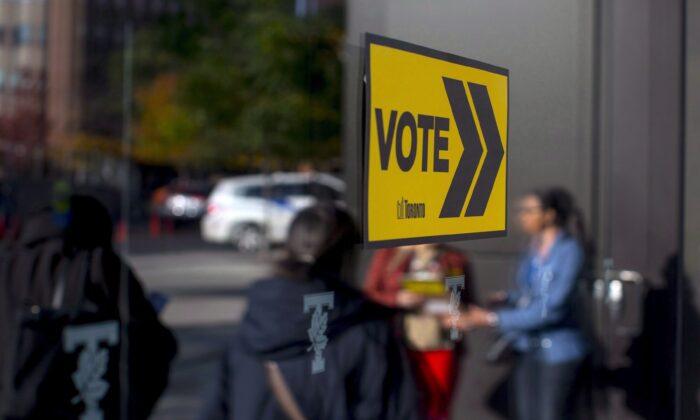The Ontario municipal elections on Oct. 24 were dominated by incumbent candidates and those who formerly held leadership positions at the provincial or federal level.
Among them were former Ontario NDP leader Andrew Horwath, who became mayor of Hamilton; former Ontario Liberal cabinet minister and party leader Steven Del Duca, who won as mayor of Vaughan; and two former Ontario Progressive Conservative leaders who were re-elected as mayor by wide margins: John Tory won his third term in Toronto, while Patrick Brown was re-elected in Brampton.
Carleton University political science professor Scott Bennett says the wins by former politicians at other levels of government are a “big story” in the results.
“This is name recognition, local organizations already linked to a person, and it generally just finds a nice holding area for veteran politicians who are addicted to the game,” Bennett said in an interview.
Jacqueline Biollo, a principal at Aurora Strategy Group, says that while experience at other levels of government gives legitimacy to candidates, it can also have drawbacks when name recognition has strong party associations.
“Party advantages aren’t necessarily seen the same, in my opinion, municipally. Because the opposite could hold true. They may have been an amazing provincial ‘x’ party leader, but if I’m not an ‘x’ party supporter I likely won’t vote for that person, municipally,” Biollo told The Epoch Times in an email.
Ottawa
The mayors of Toronto and Ottawa were recently granted “strong mayor” powers to overrule council votes that would oppose housing construction. However outgoing mayor Jim Watson did not run again, and newly elected mayor Mark Sutcliffe opposed the new powers.“The winner was able to create doubts about the potential big spending/big taxing orientation of the person who came in second. Probably some of this was based on a more effective media and messaging campaign,” he said.
“McKenney had a vision which suggested that the geographically massive city of Ottawa should just look like a better version of downtown. All we need is more bike lanes, drug treatment centres, and housing for the homeless. Of course, there was also the free transit proposal.”
Milton Mayor Gord Krantz won a 14th consecutive term by less than 1,000 votes. He was first elected in 1980 when the community had 28,000 people, not the 133,000 it does today. Although the city’s property taxes have been lower than most in the Greater Toronto Area, the re-elected Krantz said “there will need to be a lot of belt-tightening” over the next four years.
Bennett said that where no incumbent with name recognition was present, other factors were more decisive.
“About a third of councillors, mayors, and similar [positions] ran without opposition in Ontario. However, that is only part of the picture. In some cities, there was a turnover because many veterans decided to retire,” he said.
“The support of interest groups may be a factor too. In some cases, unions can be mobilized to support a ‘tax and spend’ candidate who wants to expand public services. On the other hand, there are probably other local governments that are largely in the grip of contractors and similar. Money finds a way even if it is regulated.”
Biollo said the pandemic may have helped incumbents.
“We’re still in the new normal of the pandemic. The election of former leaders at whatever capacity offers some semblance of stability in an otherwise unstable and uncertain environment,” she said.
“The electorate are dealing with so many other things as a result of the pandemic. The last thing they may feel is they need a municipality to have to train or ‘bring up to speed’ a leader to make decisions on where one lives, works, plays, and invests.”
Voter turnout in Ottawa was around 44 percent. Toronto had 29 percent, as did Milton and Cambridge. Vaughan had just 27 percent voter turnout, while it was 24 percent in Brampton. Biollo says it’s always in the interest of incumbents to demonstrate commitment to their community.
“Voter turnout is always a concern, so it’s imperative that municipal leaders and council continue to encourage stakeholder engagement with residents [and organizations] throughout the life cycle of their term in office.”





